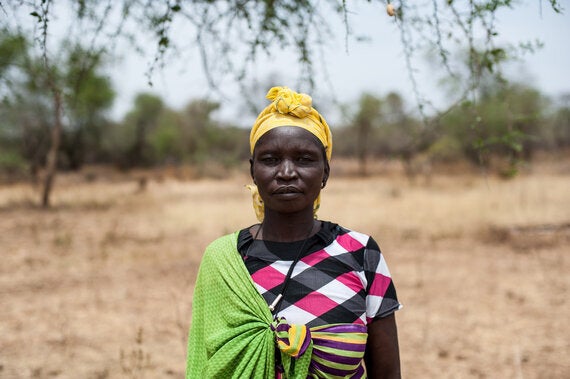I recently met Jane and Mary two women who are daughters, wives, mothers and former FGM 'cutters' I was really curious to know why it was that women, and it is always women, became FGM cutters in the first place - how they could do this and what would convince them to stop this horrific practice?
As we sat cross-legged on a cotton wrap laid on the ground in the fiercely hot barren landscape of West Pokot, Kenya, Jane quietly told me about her background.

Jane explained that her mother before her had been a cutter and that she then became one too. My question was answered as simply as that - it was something women had always done and they did it in her family. She had no reason to question it or realise it may not be right until much later. She explained how she started out,
"If you want to become a cutter you start practicing by cutting tattoos or piercing ears. When you feel like you are ready you sit next to another cutter when she's doing it. You carefully watch what she's doing. You watch until you the time comes for you to start and you start on a girl that's in your own family."
Jane was a cutter for many years even though she had herself suffered a huge tragedy from a FGM-related incident. Jane's own child was cut in the head with a knife when the doctor had to widen her birth canal. This child was disabled by a slip of the knife and later died after few years.
Jane didn't have the information until fairly recently to make the connection between FGM and the loss of her child nor was this death one she spoke about. But then one of the girls she had cut died during childbirth due to complications relating to FGM and Jane realised that what had happened to her child was connected.
Around this time a women's group supported by ActionAid had been discussing the dangers of FGM. Jane joined them and discovered that what she had suspected was true - what she had been doing was not just dangerous but could cause death. Her own family were the first people she had to persuade though - her grown-up children didn't understand why she was stopping which was when she finally told them how and why their sibling had died. Jane continued,
"When I was taught about how wrong this was I told my children they had to stop too and I explained about their sibling and said, if you had seen our other child you would understand what I mean. None of them do this now."
Jane is a member of the group and a passionate advocate against FGM and she says that there are a number of ways that cutters should be stopped:
1) Cutters need to be identified and taught why it's wrong.
2) Men need to also be shown the proof about what can happen and be taught too.
3) Village chiefs (who are male) should use their position to influence others about why it's not right.
Jane's last words to me: "One thing I want to tell mothers of girls is please, when your daughters grow, talk to her and tell her to never think of having FGM because it is bad. Also, please send your girls to school so that they can help themselves to make the most of their lives."
Family custom was also how Mary, another former cutter, did this. Her mother before her was a cutter too. There was also no reason for Mary to think that FGM could cause death - until the day when she cut one of the girls and she almost bled to death.
That's when she knew she couldn't continue. She explains her change of heart in this video:
As we packed up our kit in the hot sun and Mary showed us the way back through the village and scarce trees to our car I thought about how hard it had been to hear Jane and Mary's stories, but was wowed by their powerful determination to end FGM and tell others about its dangers. Mary's final words to me are ones I'll never forget:
"I advise girls not to get cut. And if I see another woman practicing I tell the authorities. I would never do it again, not for anything."
Join these former cutters who are championing the end of FGM and help us educate more people about the importance of protecting girls before they are cut. Please donate.
